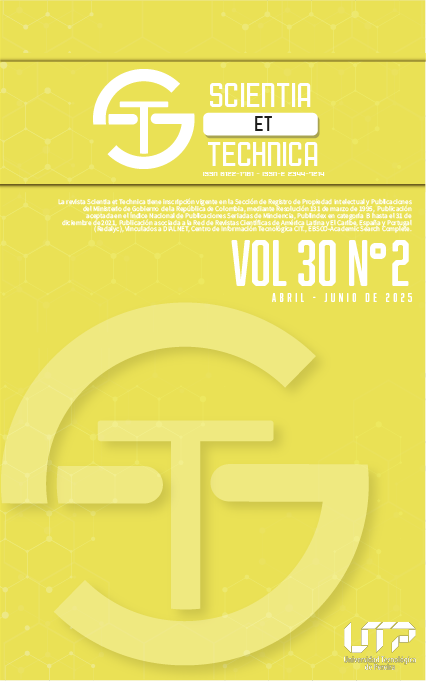Model of an ideal Rankine cycle with reheating in E.E.S
DOI:
https://doi.org/10.22517/23447214.25773Keywords:
Isentropic, efficiency, Rankine cycle, regeneration, reheating.Abstract
In the present study, a comprehensive analysis is carried out on an ideal regenerative Rankine cycle, based on the use of ICT tools for digital transformation in engineering education. The gap addressed in this work relates to the application of technologies to streamline the thermodynamic analysis of complex cycles, which have been rigorously modeled using the Engineering Equation Solver (E.E.S.) software a high-fidelity computational tool widely recognized for its accuracy in solving nonlinear, multivariable thermodynamic systems. The methodological approach adopted involves a detailed evaluation of the isentropic efficiencies of the main cycle components turbines, pump, and heat exchangers enabling a precise determination of the net power output, the rates of thermal energy transfer to and from the heat exchangers, as well as the quantification of the mass flow rates of extracted steam at specific points in the system for regenerative purposes. Additionally, the computational generation of temperature–entropy (T–s) diagrams is integrated, which serve as fundamental tools for the visualization and validation of the thermodynamic processes involved, allowing for the clear identification of each state in the cycle. Based on this graphical representation and the numerical results derived from the model, key thermodynamic properties are determined, such as specific volume at pump suction, entropy at turbine inlet, and enthalpies associated with each energy transformation, in order to quantitatively establish the isentropic efficiency of the devices and their influence on the overall efficiency of the regenerative cycle. This approach enables not only a comprehensive understanding of system behavior but also the identification of improvement opportunities for the energy optimization of advanced thermoelectric cycles.
Downloads
References
Y. O. Fernández, L. A. V. Fernández, E. G. Suarez, D. A. Villegas, J. N. Gamboa, y T. I. L. Echevarria, “Gestión del conocimiento y tecnologías de la información y comunicación (TICs) en estudiantes de ingeniería mecánica,” Apuntes Universitarios, vol. 10, no. 1, pp. 77–88, 2020. Available: DOI: 10.17162/au.v10i1.419
V. H. Medina-Matute, L. E. Solorzano-Villegas, C. A. Medina-Jiménez, y D. G. V. P. Dimas, “Innovación Educativa para la Enseñanza de la Matemática en Ingeniería,” Rev. Cient. Arbitrada Investig. Comun., Mkt. y Empresa REICOMUNICAR, vol. 7, no. 13 Ed. esp., pp. 2–12, 2024. Available: https://reicomunicar.org/index.php/reicomunicar/article/view/219
D. Mosquera-González, A. Valencia-Arias, M. Benjumea-Arias, y L. Palacios-Moya, “Factores asociados al uso de tecnologías de la información y la comunicación (TIC) en los procesos de aprendizaje de estudiantes de ingeniería,” Formación Universitaria, vol. 14, no. 2, pp. 121–132, 2021. Available: DOI: 10.4067/S0718 50062021000200121.
N. J. Hernández-Fernández, L. Zumalacárregui-de Cárdenas, y O. Pérez-Ones, "Simulación de condiciones de operación y fluidos de trabajo para ciclos Rankine orgánicos," *Rev. Investig. Desarro. Innov.*, vol. 10, no. 2, pp. 349–358, 2020. Available: https://doi.org/10.19053/20278306.v10.n2.2020.10213.
S. A. Vásquez, A. P. Barturén, y F. M. Carbajal, "Aplicación del simulador Aspen HYSYS en la resolución de problemas del ciclo Rankine regenerativo con recalentamiento intermedio," *Inf. Tecnol.*, vol. 31, no. 3, pp. 199–208, 2020. Available: http://dx.doi.org/10.4067/S0718-07642020000300199.
Y. A. Çengel y M. A. Boles, *Thermodynamics: An Engineering Approach*, 9th ed. New York: McGraw-Hill Education, 2021.
M. A. Ortega Sarceda, *Optimización de la eficiencia de una planta de potencia solar con ciclo Rankine orgánico*, 2022. Available:
http://hdl.handle.net/2183/31764
J. Smith y A. Brown, "Enhancing the efficiency of Rankine cycle with reheat: A review," *Int. J. Energy Res.*, vol. 44, no. 3, pp. 1234–1250, 2020.
R. C. Olivera, J. J. M. Cosgalla, y F. D. Sánchez, "Los métodos experimentales y su importancia en la enseñanza de la ingeniería mecánica como complemento al diseño asistido por computadora," 2021.
L. Johnson y T. Williams, "Impact of reheat on the performance of Rankine cycle: A case study," *Appl. Therm. Eng.*, vol. 150, pp. 250–260, 2019.
N. Zobeiry y K. D. Humfeld, "A physics-informed machine learning approach for solving heat transfer equation in advanced manufacturing and engineering applications," *Eng. Appl. Artif. Intell.*, vol. 101, Art. no. 104232, 2021. Available: https://doi.org/10.1016/j.engappai.2021.104232
J. D. Sánchez Más, *Modelización con el software Engineering Equation Solver (EES) para la optimización de una central térmica de un ciclo real de turbina de vapor utilizado en la central nuclear de Cofrentes*, 2016.
Downloads
-
Vistas(Views): 252
- PDF (Español (España)) Descargas(Downloads): 247
Published
How to Cite
Issue
Section
License
Copyright (c) 2025 Scientia et Technica

This work is licensed under a Creative Commons Attribution-NonCommercial-ShareAlike 4.0 International License.
Copyrights
The journal is free open access. The papers are published under the Creative Commons Attribution / Attribution-NonCommercial-NoDerivatives 4.0 International - CC BY-NC-ND 4.0 license. For this reason, the author or authors of a manuscript accepted for publication will yield all the economic rights to the Universidad Tecnológica of Pereira free of charge, taking into account the following:
In the event that the submitted manuscript is accepted for publication, the authors must grant permission to the journal, in unlimited time, to reproduce, to edit, distribute, exhibit and publish anywhere, either by means printed, electronic, databases, repositories, optical discs, Internet or any other required medium. In all cases, the journal preserves the obligation to respect, the moral rights of the authors, contained in article 30 of Law 23 of 1982 of the Government Colombian.
The transferors using ASSIGNMENT OF PATRIMONIAL RIGHTS letter declare that all the material that is part of the article is entirely free of copyright. Therefore, the authors are responsible for any litigation or related claim to intellectual property rights. They exonerate of all responsibility to the Universidad Tecnológica of Pereira (publishing entity) and the Scientia et Technica journal. Likewise, the authors accept that the work presented will be distributed in free open access, safeguarding copyright under the Creative Commons Attribution / Recognition-NonCommercial-NoDerivatives 4.0 International - https://creativecommons.org/licenses/by-nc-nd/4.0/deed.es license.



